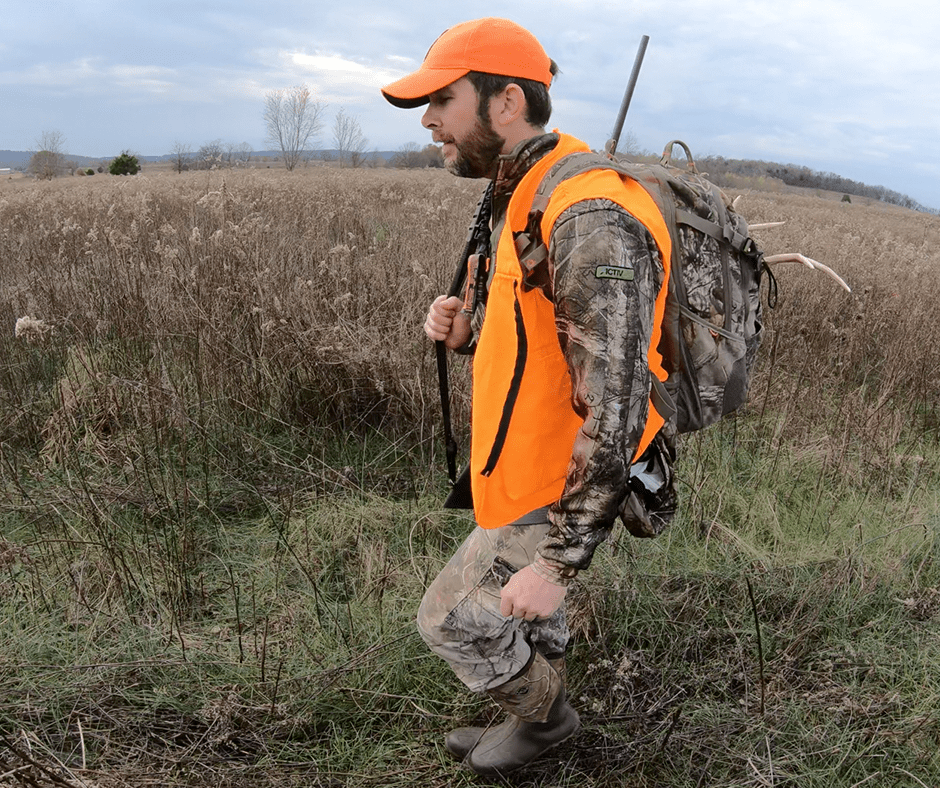Some elements of hunting land leases have changed, but the lease concept isn’t a new one. Hunting leases help wildlife, hunters, and landowners alike.
I watched as that chocolate-racked 10-pointer materialized in the hazy Ohio timber. Ten yards behind a line of does, the big buck didn’t budge unless the does did. Using them as sentries, the deer clearly knew how to play the game. The only problem? This time, I was there, and downwind of them all.
Several minutes later, with the buck in range and in a clear shooting lane, my CVA sparked, barked, and blew a 50-caliber bullet right into that 10-pointer’s shoulder. The deer buckled and bull-dozed through some saplings, and then piled into the ground. None of that would have been possible without my hunting land lease secured through Base Camp Leasing.
Whether landowner or hunter, those who are skeptical of hunting leases should read on. Hunting leases help wildlife, hunters, and landowners alike. That’s what we call a win-win-win. Here’s what you should know.
What Is a Hunting Lease?
By definition, it is a simple agreement between a landowner (lessor) and hunter (lessee). A lease can be for as many acres, or as few, as the agreement covers. Theoretically, a hunting lease can be for 1 acre or 1 million acres. The hunter pays the landowner for access to the property.
Obviously, compensation is necessary for it to be a bona fide lease. This is usually figured with a price-per-acre formula. Acreage prices generally range based on state, quality of the ground, percentage of huntable acres, ability to access (i.e.: crops in, fenced areas, etc.), and more.
This agreement can include partial rights, such as limiting to specific game animals or times of year, or it can be all-inclusive for all legal game in a 12-month period. The details of the agreement should be clearly outlined in a signed contract.

The History of Leasing
Most hunters believe the commonly purported myth that leasing hunting land is a new trend. It isn’t, though. In fact, in America alone, it’s been happening with regularity for nearly a century.
Take Texas, for example. It’s among the states in highest demand for private hunting land opportunities. There, hunting leases have been commonplace for many decades. In fact, according to most sources, that’s where the modern hunting lease concept began. The practice started, and subsequently took off, in the 1930s.
Of course, in time, the hunting lease concept spread to other parts of the country. It first spread to the Southeast, where large paper and timber companies owned vast swaths of forested areas. By the 1940s and 50s, most of these entities leased the hunting and trapping rights to hunters to increase revenue.
Smaller leases, and larger hunt clubs, were born in states such as Alabama, Georgia, Mississippi, South Carolina, and more. These range in size from one-man leases to clubs with hundreds of hunters and governing bylaws.
By the late 1900s, the hunting lease idea spread even further, and reached the Northeast, Mid-South, Midwest, and beyond. That said, these regions offer different dynamics. Rather than large contiguous tracts under control of large companies, these are defined by smaller acreages and family-owned properties. That’s the difference in areas being split into thousands vs hundreds (or even dozens) of acres.
For many years, while hunters in the Southeast were paying for private land hunting access, those in the Midwest, Mid-South, and Northeast, were largely accessing by permission (for free). In time, landowners throughout these regions learned the value of hunting land access. This led to a transition away from free access to that of the modern hunting lease.
And that’s completely as it should be — fair, just, and mindful of all parties involved. While hunting by permission is great, a landowner who wishes to be compensated for use of their resource shouldn’t be frowned upon. They own the land, maintain the mortgage, pay the taxes, cover the expenses, fund the upkeep, and more. It’s completely reasonable, and should be expected, for them to request a fair hunting lease price to access their ground.
The Landscape of Modern Hunting Leases
Today, the hunting lease landscape continues to change. But at its core, landowners charging a nominal fee for hunting access remains much the same as it was brand-new in the 1930s. The bones of hunting land leases remain the same. Only, over time, inflation takes the price higher. That said, hunting leases are good, and benefit landowners, hunters, and wildlife alike. Hunting leases accomplish many important objectives.
For Wildlife: Land that is leased to a hunter remains intact, and doesn’t get split into smaller tracts, which can quickly lead to habitat destruction. Overall, this decreases development, reduces habitat depredation, and preserves habitat for all wildlife.
For Hunters: Fundamentally, hunting leases help preserve overall hunting land access. It ensures hunters maintain access to hunting land, rather than it going un-hunted or being destroyed. If that tract is leased to a hunter, it isn’t closed to hunting access, sold to a developer, etc.
For Landowners: Without question, hunting leases keep landowners happy by increasing property revenue, decreasing crop depredation, minimizing trespass issues, and more. Skeptical landowners see hunting through a different lens when they realize hunting has value, and that mindful hunters will treat them, their land, and wildlife, with respect.
Hunting land leases are now a mainstay in America. It’s not a new way of life in the hunting world, but a continuation of a heritage that began 100 years ago on a dusty piece of ground in the beloved state of Texas. You can be part of that story.


Leave A Comment